Editor's note: China has designated the third Sunday of each May as a national day for assisting disabled persons, which falls on May 19 this year. Let's take a look at how new technologies are improving the lives of people with disabilities.
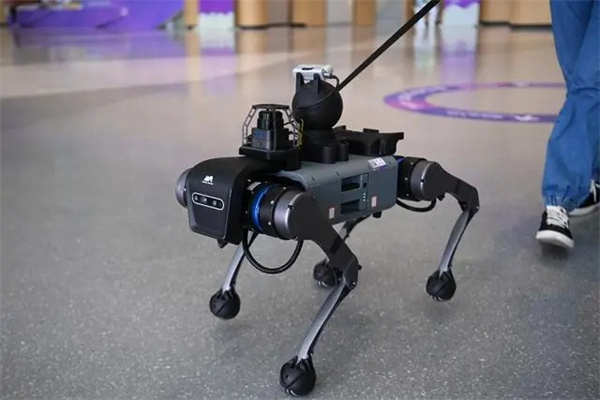
A visitor experiences the robot guide dog "Xiaoxi" in Hangzhou Asian Para Games, in East China's Zhejiang province, October 26, 2023. [Photo/Xinhua]
Robot guide dogs
There are currently about 400 trained guide dogs for the country's 17.31 million blind or visually impaired people, according to the data from the China Association for the Blind.
While the training of a guide dog usually requires significant time and expense, advancements in transducer and artificial intelligence technology have led to the development of robot guide dogs. These innovative devices are capable of accurately identifying road conditions, obstacles, and surrounding facilities.
Additionally, they offer features such as map construction and user perception. Through voice prompts and vibration feedback, robot guide dogs provide real-time navigation services for the visually impaired, enabling them to safely navigate city streets while also addressing their indoor navigation requirements.
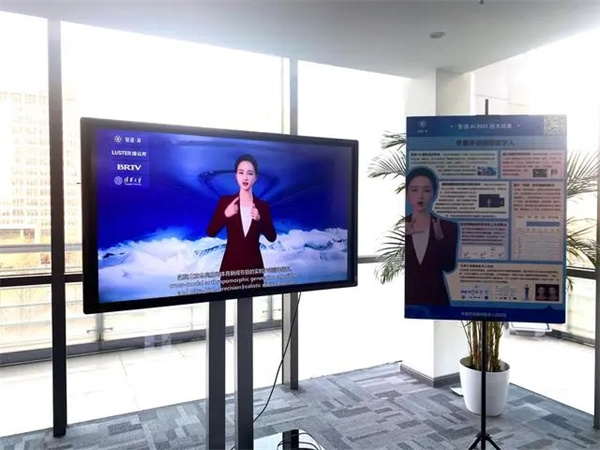
The photo shows the AI digital sign language announcer during Beijing Olympic Winter Games in 2022. [Photo/Xinhua]
AI digital sign language interpreter
Learning language poses a significant challenge for the hearing-impaired population, particularly for those who are middle-aged and elderly. In the short term, sign language remains the primary method of communication for individuals with hearing impairments and is difficult to replace.
An AI digital sign language interpreter has the potential to bridge this gap. Leveraging various AI technologies such as 3D digital person modeling, machine translation, multimodal digital generation, transfer learning, real-time facial action generation and stimulation, this AI interpreter can greatly enhance the sense of reality and intimacy associated with sign language interpretation during broadcasts while also improving overall user experience. Its widespread application can better assist those who are hearing impaired in overcoming communication barriers in daily life across public services, special education settings and other scenarios.
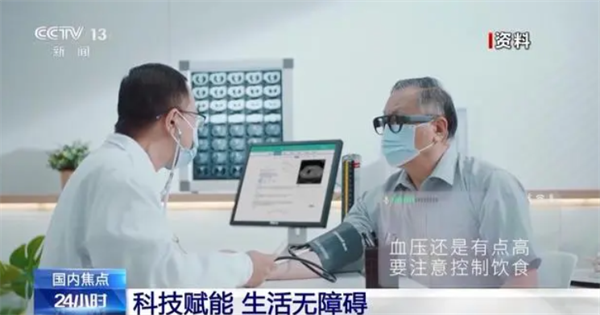
A doctor communicates with a patient wearing a pair of smart glasses. [Screenshot from CCTV News]
Smart glasses capable of real-time language translation
A pair of smart glasses can turn voice conversation, which is projected directly into the wearer's field of vision, between able-bodied individuals and hearing-impaired people into real-time text. This breakthrough technology serves as a communication bridge for the hearing-impaired groups by eliminating their reliance on lip reading or sign language during conversations. The glasses can ensure that every spoken word is clearly visible.
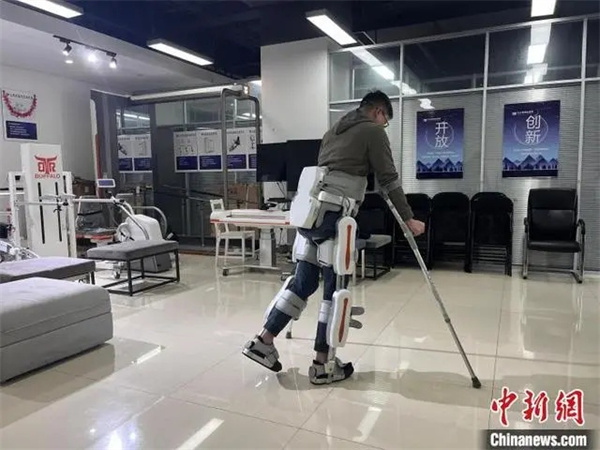
A volunteer skillfully controls the exoskeleton robot. [Photo/Chinanews.com]
Wearable exoskeleton robot
An exoskeleton robot is a wearable powered exoskeleton system based on a variety of advanced technologies, including algorithm, transducers, biomedical engineering, and artificial intelligence. It can effectively aid people with limb mobility dysfunction by facilitating movements such as assisting with bending, stretching and normal walking. Through human-machine interaction, the robot will enable disabled people to lead a normal life.
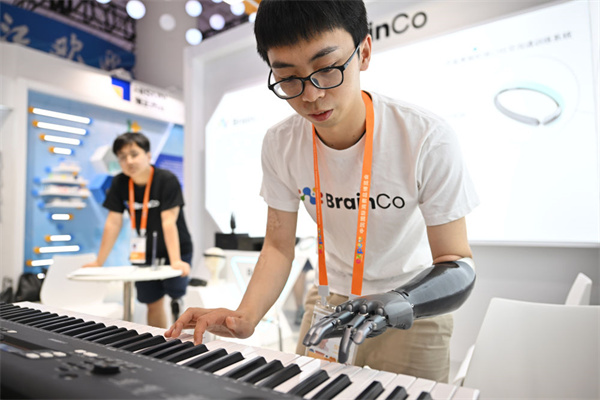
An exhibitor displays an intelligent bionic arm at the Zhejiang booth of the 3rd China International Consumer Goods Expo, April 10, 2023. [Photo/Xinhua]
Bionic arms
A bionic arm is an innovative technology that connects prosthetic limbs to the bones through bone integration. This process utilizes bone tissue to wrap titanium, forming a strong mechanical connection that enables amputees to regain natural function. By collecting and processing myoelectric nerve signals with the assistance of artificial intelligence algorithms, bionic arms can execute actions based on brain instructions, offering hope and opportunities for improving the quality of life for amputees.
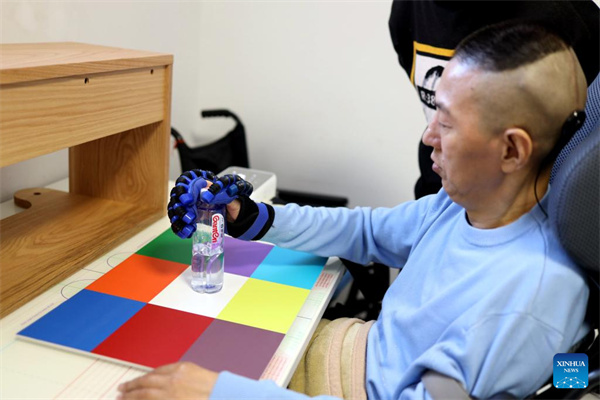
A patient grips a bottle of water in Beijing, Nov 14, 2023, after receiving a surgery which implanted a wireless processor into his skull. A Chinese clinical team has implanted a wireless processor into the skull of a paralyzed man, significantly recovering his motor skills, including drinking a bottle of water on his own. [Photo/Tsinghua University/Handout via Xinhua]
Brain-computer interface
Brain-computer interface technology collects electroencephalogram data from the cerebral cortex through signal acquisition equipment, and then converts them into signals that can be recognized by computers after processing such as amplification, filtering, and A/D conversion. Then, these signals are preprocessed and feature signals are extracted for pattern recognition, and finally converted into specific instructions for controlling external devices to achieve control of external devices.
This technology therapy is still relatively new. In October, Xuanwu Hospital and Tsinghua University School of Medicine successfully completed the first implantation of wireless minimally invasive implantable BCI clinical trial. This advancement enabled a quadriplegic patient to use brain electrical activity to autonomously control pneumatic gloves in order to drink water.
Several national and local policies have been implemented in support of brain-computer interface technology. It is anticipated that this technology will be widely utilized in medical rehabilitation in the future, assisting patients and disabled individuals with tasks such as computer usage, controlling household appliances switches, limb control, aiding in rehabilitation training, etc., and ultimately enhancing their quality of life.